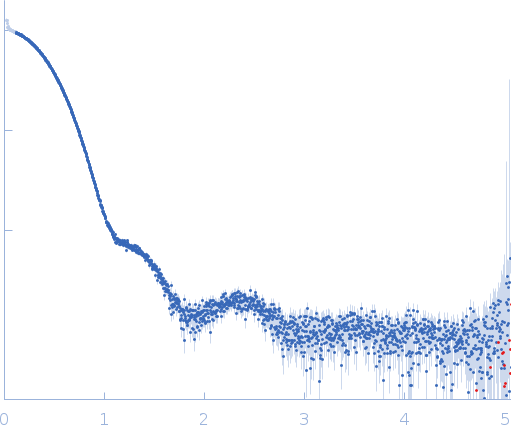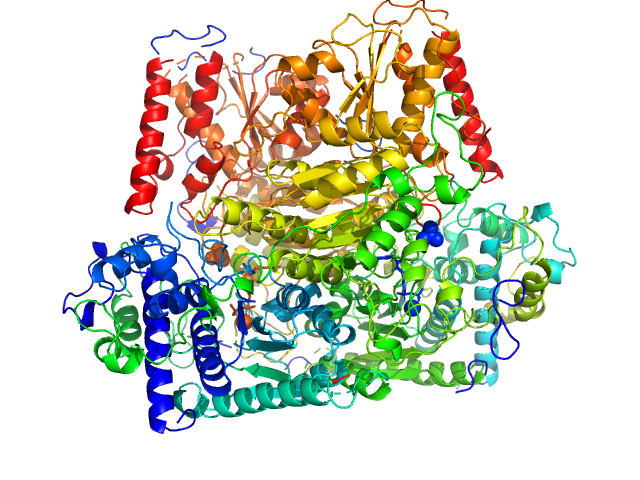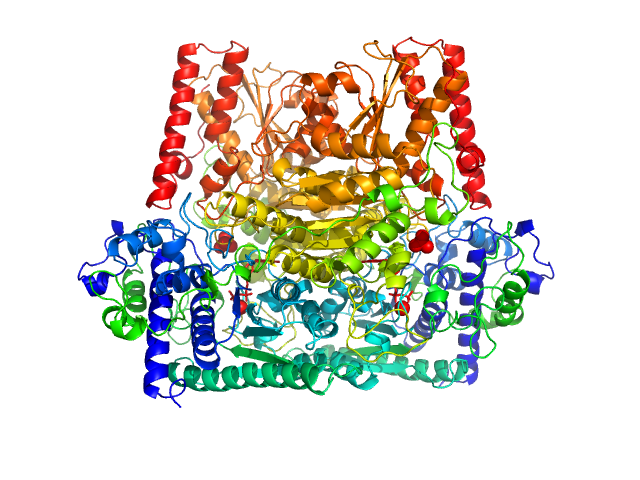| MWI(0) | 146 | kDa |
| MWexpected | 191 | kDa |
| VPorod | 237 | nm3 |
|
log I(s)
2.12×104
2.12×103
2.12×102
2.12×101
|
 s, nm-1
s, nm-1
|
|
|
|

|
|

|
|
Synchrotron SAXS data from solutions of phosphoketolase in 20mM potassium phosphate, 150mM NaCl, 0.007 %(w/v) β-octyl glucoside, 1mM DTT, 1mM MgCl2, 1mM thiaminpyrophosphate, 2 % v/v glycerol, pH 7 were collected on the EMBL P12 beam line at the PETRA III storage ring (Hamburg, Germany) using a Pilatus 2M detector at a sample-detector distance of 3 m and at a wavelength of λ = 0.124 nm (l(s) vs s, where s = 4πsinθ/λ, and 2θ is the scattering angle). One solute concentration of 8.00 mg/ml was measured at 20°C. 29 successive 0.045 second frames were collected. The data were normalized to the intensity of the transmitted beam and radially averaged; the scattering of the solvent-blank was subtracted.
|
|
|||||||||||||||||||||||||||||||||